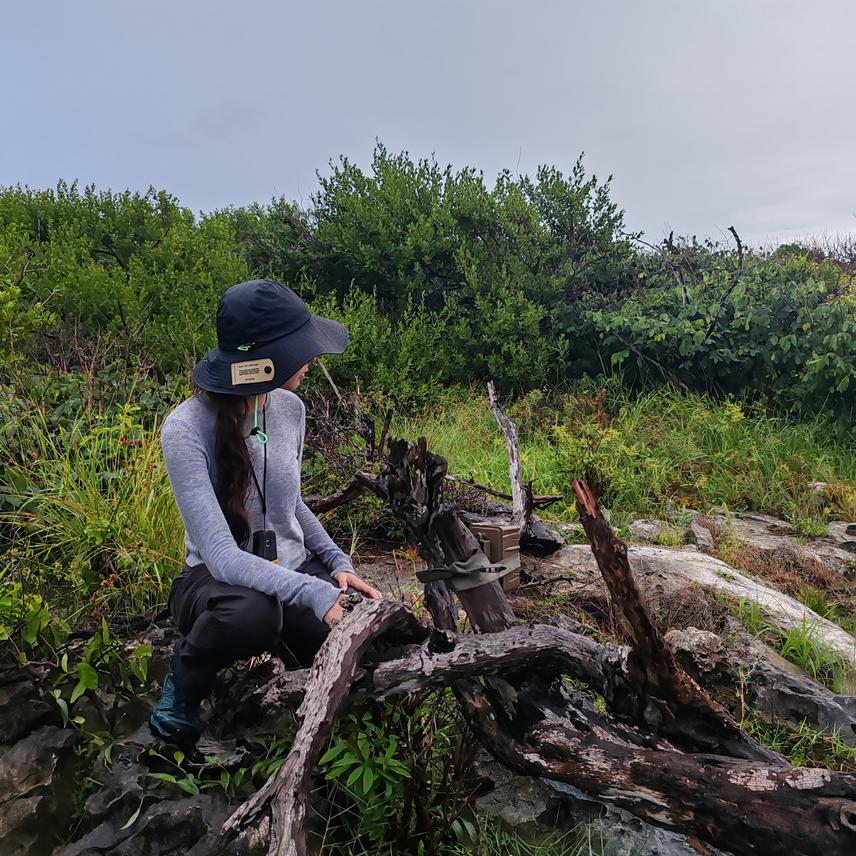Jovana Villaloz Morales
Exotic mammals are responsible for 90% of vertebrate extinctions on islands. Efforts to counteract the effects of invasive exotic species focus on preventing their spread, but when a species extends beyond its natural range and threatens biodiversity, eradication becomes an option. However, in recent years, cases of at-risk species thriving outside their native range have increased, mainly due to the international wildlife trade and global change, as native areas become suboptimal and adjacent areas become more suitable for habitation. This invasion/conservation paradox prompts reconsideration of the case of native and endangered species that become invasive, and calls for exploring new management strategies. To make informed decisions, it is essential to anticipate the potential impacts these species may have on the invaded ecosystem.

Placement of camera traps in coastal dunes, Cozumel ©Aguilar-Guerrero A.
Recently, the first records of the margay (Leopardus wiedii, Schinz 1821) on Cozumel Island, an area without native wild cats, were published. The first record was of a juvenile female captured in 2006. Subsequently, at least 30 individuals were found between 2015 and 2018, confirming not only its recent introduction, but also the establishment of a widespread population across the island. The margay is internationally listed as near-threatened, while in Mexico it is considered endangered. This presents a conservation paradox, as it is a threatened species in Mexico but is non-native and has invasive potential in Cozumel.
To date, no studies have been conducted to evaluate the status of this population, and the magnitude of its potential impact remains unknown. Therefore, this study will evaluate the current status of the margay population on Cozumel Island through population and ecological estimates. Additionally, it will infer the potential impact the margay may have on Cozumel's biota, particularly terrestrial mammals. The results of this project could undoubtedly have a direct impact and application in addressing an emerging conservation issue in a system with high endemism. This study will allow the establishment of management and impact mitigation strategies for both the margay and the most affected native species. Furthermore, it will increase knowledge about the ecology of the margay, a species for which relatively few population studies exist.
Header: Record of the presence of the margay in medium semi-deciduous forest, Cozumel. ©LF Palacios-Aldana/MA Martínez-Morales, 2016.